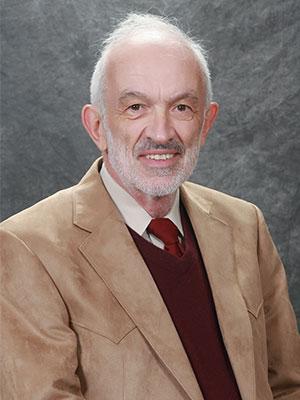AME Seminar: William S. Saric

Thursday, April 20, 2023 - 4:00 p.m.
William S. Saric
University Distinguished Professor Emeritus
Texas A&M University
"Texas A&M Flight Research Laboratory: Motivation, History, Accomplishments"
AME Lecture Hall, Room S212 | Zoom link

Abstract: The principal motivation for establishing the Flight Research Laboratory (FRL) was the study of laminar-turbulent transition and control on swept-wing geometries in a low-disturbance environment at transport unit Reynolds numbers (Re’) of 10x106/m. The basic philosophy was to use proven aircraft that will always be flown within their certified flight envelope by certified pilots. Experiments were conducted on specially designed models or extensions that did not compromise the flight characteristics of these aircraft. This means that the aircraft had the FAA designation of “experimental” while these aircraft were modified. However, every maintenance AD was satisfied so that each aircraft had an airworthiness certification. Three aircraft were employed and used for a variety of projects: A Cessna O-2A, which was the military version of the Cessna 337 Skymaster; a Velocity XL-RG, which was a Burt Rutan design of composite construction and home built from a kit; and a Stemme ST-10V which was a powered glider.
The projects that were flown included: (1) air-pollution measurements over Houston/Victoria, (2) carbon particle concentrations over Easterwood Airport and the A&M Fire School, (3) an undergraduate course in Flight Test Engineering, and (4) boundary-layer transition and control on a swept-wing. A total of 888 flight ops were completed without a mishap during 2006 - 2015. Along the way, special instrumentation systems such as quantitative infrared transition measurements, plasma actuators on a “wet” wing for flow control, and a 4 hot-wire configuration to measure vorticity disturbances and acoustic disturbances in the atmosphere were developed.
The work was supported by AFRL, AFOSR, Northrup-Grumman, Texas Commission on Environmental Quality, Texas A&M University, and the University of Texas.
Bio: William S. Saric is a University Distinguished Professor Emeritus and held the George Eppright ’26 Chair in Engineering at Texas A&M University where he has been since Jan 2005. He received his Ph.D. in mechanics from the Illinois Institute of Technology in 1968 and has held appointments at Sandia National Laboratories (Re-entry Vehicles 1963-66; Atomic & Fluid Physics, 1968-75), Virginia Tech (Engineering Science & Mechanics, 1975-84), and Arizona State University (Mechanical & Aerospace Engineering, 1984-2005). He is a member of the National Academy of Engineering and The Academy of Medicine, Engineering, and Science of Texas. He received the AIAA Fluid Dynamics Award (2003), the SES G.I. Taylor Medal (1993), the AGARD (NATO) Scientific Achievement Award for Hypersonics (1996). He is a Fellow of AIAA, APS, and ASME and was Chair of the AIAA Transition Study Group (2000-2012). He has re-established two major wind tunnels and created the flight research laboratory at Texas A&M University. He was also the Director of the AFOSR/NASA National Center for Hypersonic Laminar-Turbulent Transition Research. Most recently, he has conducted computational, experimental, and flight research on stability, transition, and control of 2-D and 3-D boundary layers over a range of Mach numbers.

